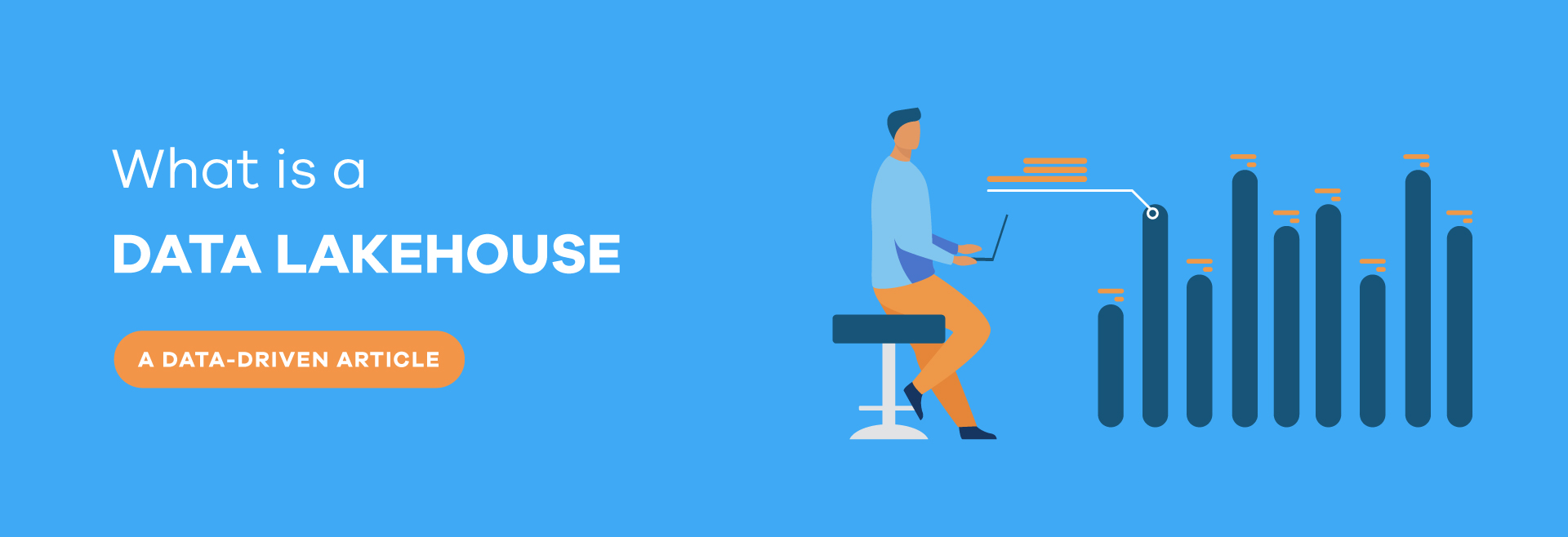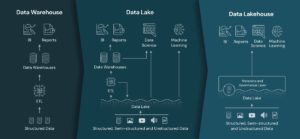
What is a Data Lakehouse?
Wondering how you can leverage the incredible amounts of data generated by your business’
channels every single day? This is how Data Lakehouse can help.
Although Data Lakehouse sounds like a vacation spot for… data, it is, in fact, a specific type of data architecture that merges a Data Lake and a Data Warehouse. In case you are wondering, “Who even comes up with these names?” we can only answer people who have a taste for puns and somewhat weird analogies and metaphors. For the sake of simplicity, let’s say IT people are also fun.
These are the topics that we will cover:
- What is a Data Warehouse?
- What is a Data Lakehouse?
- What are the key benefits of a Data Lakehouse?
- How to implement a Data Lakehouse
What is a Data Warehouse?
The concept of Data Warehouse dates back to the 80’s. It is a centralised repository for data accumulated from multiple sources. This means CRM software, relational databases, business applications, etc. Just like an actual warehouse, where goods are stored, the data in data warehouses is (highly) structured, and represents a central version of the truth.
Ok, let us give an example: a data warehouse might combine customer information from several sources within an organization, such as POS systems, mailing lists, website, or website or social media comments. Business analysts can use that later on to produce reports as part of Business Intelligence efforts. In time, this data can generate insights on customer preferences, help design a better shopping experience or provide efficiency opportunities.
What is a Data Lake?
With the rapid growth of technology, the world started generating and collecting increasingly large amounts of data from different sources, like social media. These copious amounts of data became too large and too messy to be processed in data warehouses – and so data lakes emerged. A Data Lake is a data repository where data is stored in raw form, that is, both structured and unstructured, but essentially unrefined. Data lakes focus more on data storage rather than data management.
Where does the analogy to a lake come from? Well, think of an actual natural lake; it can have many rivers or small streams of water flowing into it, and the water from the various sources each with different quality or quantity; some of the water may be clean, and some may be dirty and muddy, some of it is constantly flowing, and some is seasonal. The point of a lake is it is not organised. Data lakes are playgrounds for data scientists, who use all that stored, unprocessed data, in machine learning, predictive analysis, or profile creation.
So, with data warehouses and data lakes defined, we’re now ready to move on to Data Lakehouses.
So, what is a Data Lakehouse?
A Data Lakehouse is a data architecture that combines the principles of a data lake (copious amounts of raw data) with a data warehouse (manageable structured data). A Data Lakehouse is a solution that makes use of the best features of both concepts and avoids their respective shortcomings.
Concretely, a Data Lakehouse stores all sorts of data – structured (like excel spreadsheets, CSV files or relational databases with specific information), unstructured (like PDF files, images, video, and audio files), and semi-structured (like TXT, HTML, JSON, or XML files with some kind of structure as titles, headers, paragraphs, labels, tags, etc) – and enables structure and schema to be applied to this “jumbled” data.

What is Data Lakehouse Source: databricks
From a Data Lakehouse it is possible to extract structured data for Business Intelligence, and unstructured and semi-structured data to be used in data science, machine learning, and AI.
What are the key benefits of a Data Lakehouse?
The long-story-short of a Data Lakehouse is the ability to derive intelligence from all sorts of data and provide meaningful insights and patterns which can be critical for the success of a business.
Of course, you could maybe do it using separate data warehouse and data lake. But why use a multiple-solution system when you can simplify your life? The advantages of a Data Lakehouse over a combination of Data Warehouse + Data Lake are:
- Less time and effort spent in system administration.
- Simplified data governance and audit mechanisms.
- Reduced data movement and redundancy (data copies).
- Direct access to source data by analysis tools.
- Enables data analysts and data scientists to be more self-sufficient.
- Faster time-to-insight.
- Data storage that is cost-effective.
- Less resources (technology and human) to maintain the system.
- Seamless BI workflow with your BI tool.
- Easier to ensure data integrity.
- Separation of storage and compute resources.
- Support for IoT data.
How to implement a Data Lakehouse
As with any new concept, the success of Data Lakehouse hinges on its implementation. These are the key steps to build a Data Lakehouse:
- Start with a single data lake that holds every piece of data
- Apply governance to your data lake, i.e., data warehouse principles
- Optimize your data for fast query performance
- Provide native support for machine learning
- Use open data formats and APIs in order to prevent lock-ins
This process is not trivial. There are certain business-end and IT-end requirements that need to be fulfilled in order to build a Data Lakehouse from a data lake, or even from scratch. Sounds difficult? With our IT expertise and your business knowledge, we can do it.
Data Lakehouse with a (Near) Partner
Your business has matured, and the next step is to start (really) leveraging data. At Near Partner we follow an innovative, data-driven philosophy, and we thrive by helping our customers succeed.
In the era of Big Data, we are more than equipped to provide help with the latest data analysis tools, as well as with the best practises in the business world. We tailor each solution to our customer’s needs. Get in touch and let’s get to building that Data Lakehouse.





